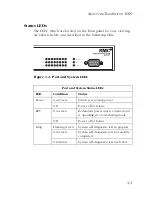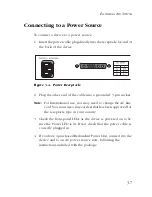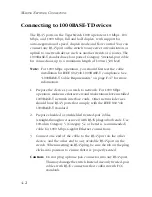
N
ETWORK
P
LANNING
2-3
Making VLAN Connections
VLANs can be based on port groups, or each data frame can be
explicitly tagged to identify the VLAN group it belongs to. When
using port-based VLANs, ports can either be assigned to one
specific group or to all groups. Port-based VLANs are suitable for
small networks. A single switch can be easily configured to
support several VLAN groups for various organizational entities
(such as Finance and Marketing).
When you expand port-based VLANs across several switches, you
need to make a separate connection for each VLAN group. This
approach is, however, inconsistent with the Spanning Tree
Protocol, which can easily segregate ports that belong to the same
VLAN. When VLANs cross separate switches, it is therefore better
to use VLAN tagging. This allows you assign multiple VLAN groups
to the trunk ports (that is, tagged ports) connecting different
switches.
Figure 2-2. Making VLAN Connections
Note:
When connecting to a switch that does not support IEEE
802.1Q VLAN tags, use untagged ports.
Summary of Contents for TigerCard 1000
Page 2: ......
Page 12: ...COMPLIANCES vi ...
Page 16: ...TABLE OF CONTENTS x ...
Page 38: ...INSTALLING THE SWITCH 3 8 ...
Page 56: ...ORDERING INFORMATION D 2 ...
Page 64: ...GLOSSARY Glossary 8 ...
Page 68: ...INDEX Index 4 ...
Page 69: ......
















































